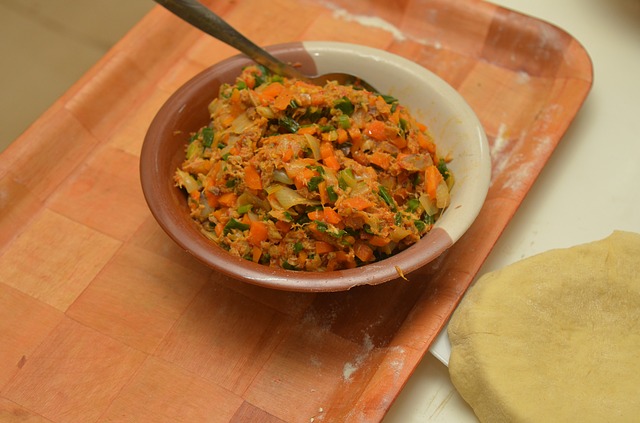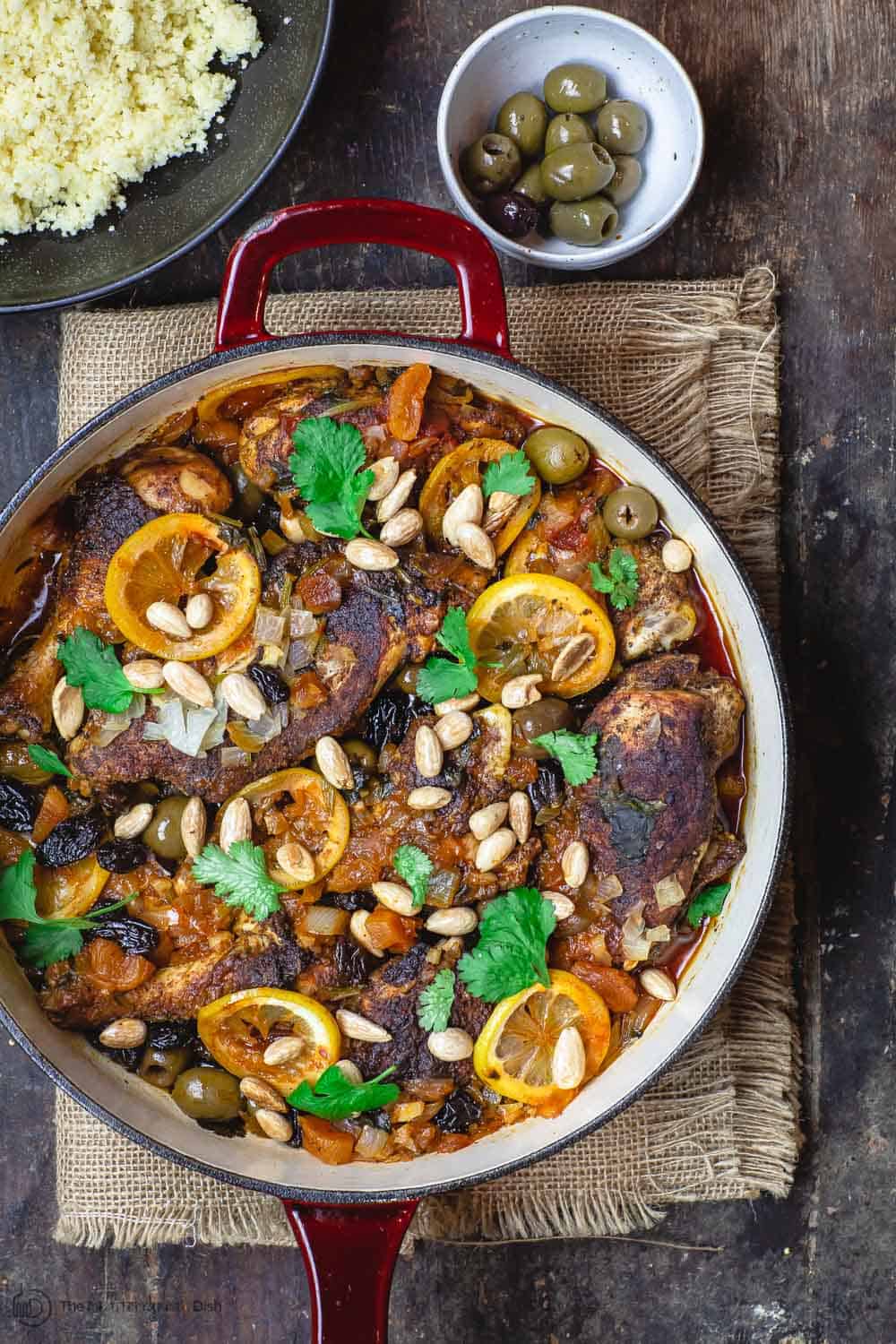Relish the Distinct Tastes of Moroccan Food Las Vegas Offers
Relish the Distinct Tastes of Moroccan Food Las Vegas Offers
Blog Article
Mediterranean Food: A Flavorful Trip Via Practice and Preference
Mediterranean food acts as a remarkable intersection of tradition and taste, attracting from a diverse variety of societies that span continents. This culinary heritage not just showcases the use of fresh, regional components yet also highlights the relevance of communal dining experiences that have actually been valued for generations. The profound flavors and wellness advantages associated with the Mediterranean diet have garnered international affection, yet underneath its surface area exists a complex narrative of historical influences and local specializeds that necessitate further expedition. What special aspects add to its long-lasting appeal and relevance in modern cooking techniques?
Origins of Mediterranean Food
The origins of Mediterranean cuisine are deeply rooted in a rich tapestry of background, location, and social exchange. This culinary tradition arises from an area specified by its varied landscapes, consisting of coasts, mountains, and fertile levels, which have actually influenced its farming methods and food manufacturing. The Mediterranean Basin, incorporating nations such as Italy, Greece, Spain, and Turkey, has been a crossroads of worlds for millennia, where profession paths helped with the exchange of ingredients, techniques, and cooking viewpoints.
Ancient societies, including the Greeks and Romans, considerably designed Mediterranean foodways, highlighting the value of fresh, seasonal fruit and vegetables and common dining. The spread of farming, especially the cultivation of grains, olives, and grapes, laid the foundation for dishes that continue to be staples today. The impact of various conquerors and investors, such as the Moors and Ottomans, introduced cooking styles and brand-new flavors, better improving the cuisine.
Today, Mediterranean cuisine is celebrated not just for its flavor and variety but also for its focus on healthful consuming, embodying a well balanced approach to nutrition that remains to appeal to international tastes buds. This historic interplay of components and societies forms the significance of what we currently acknowledge as Mediterranean food.
Key Active Ingredients and Tastes
Mediterranean cuisine is identified by a vibrant variety of key active ingredients and flavors that reflect the area's agricultural bounty and cultural heritage. Central to this cooking practice are fresh vegetables, fruits, and herbs, which supply necessary nutrients and vivid tastes. mediterranean restaurant las vegas. Staples such as tomatoes, eggplants, olives, and bell peppers are frequently included, showcasing the area's varied climate and dirt
Olive oil, often considered as the backbone of Mediterranean cooking, conveys richness and deepness to meals. It is enhanced by a selection of natural herbs and seasonings, including basil, oregano, and garlic, which elevate the tastes of meats, seafood, and grains. Grains, especially wheat and rice, act as essential parts, with dishes like couscous and pasta being staples throughout the area.
Additionally, legumes such as chickpeas and lentils not just offer healthy protein but also contribute to the food's robustness. Collectively, these active ingredients produce a harmonious equilibrium that defines Mediterranean food.
Regional Variations and Specializeds
Diverse regional variants and specialties define Mediterranean cuisine, reflecting the distinct cultural impacts, geography, and background of each area. In the seaside regions of Italy, for instance, seafood preponderates, with meals like Sicilian caponata showcasing a blend of eggplant, olives, and capers. At the same time, Greece is renowned for its use of feta cheese, olives, and fresh natural herbs, obvious in classic prep work such as moussaka and spanakopita.
The Levantine countries, consisting of Lebanon and Syria, emphasize making use of grains and flavors, with specializeds like tabbouleh and kibbeh taking center stage. North Africa, especially Morocco, stands apart for its aromatic tagines and couscous, typically enriched with dried out fruits and an abundant variety of seasonings.
In comparison, the Iberian Peninsula highlights using cured meats and vibrant tastes, with Spanish paella and Portuguese bacalhau exhibiting the region's culinary variety.
Each Mediterranean area not only commemorates its neighborhood components yet also reflects the historical trade routes and cultural exchanges that have formed its food society, creating a lively tapestry of tastes that captivates the palate.
Food Preparation Strategies and Designs
Food preparation techniques and designs in Mediterranean cuisine are as differed as the areas themselves, usually mirroring available components and regional customs. The heart of Mediterranean food preparation exists in its simplicity, where fresh produce, herbs, and olive oil take center stage. Techniques such as cooking, toasting, and sautéing are frequently employed, permitting the natural tastes of the components to beam.
Barbecuing, common in seaside locations, infuses fish and shellfish and meats with a smoky splendor, while roasting, particularly in the center East, boosts the sweet taste of root veggies and meats. Sautéing, typically used in Spanish and italian recipes, supplies a fast method to draw out the splendor of garlic and onions, working as a foundation for many sauces.
Stewing is another vital method, particularly in North African foods, where tagines simmer fragrant spices and tender meats gradually, blending flavors with time - mediterranean restaurant las vegas. Baking, especially in the context of bread and pastries, holds a considerable location in Mediterranean society, with each area boasting its own specializeds. Generally, these diverse cooking techniques not just celebrate the active ingredients however additionally show the ingrained culinary heritage of the Mediterranean, making each dish a testimony to its rich history

Health Perks of Mediterranean Diet
Frequently acknowledged for its numerous wellness advantages, the Mediterranean diet stresses the consumption of entire, minimally processed foods that promote total wellness. This nutritional pattern is abundant in fruits, veggies, whole grains, beans, nuts, and healthy and balanced fats, particularly olive oil, while urging modest intake of fish and chicken and restricting red meat and desserts.
Study constantly links the Mediterranean diet regimen to a range of wellness advantages. Especially, it has actually been related to a lowered threat of heart diseases, mostly because of its focus on heart-healthy fats and anti-oxidants. The diet plan is additionally believed to boost cognitive function and might decrease the risk of neurodegenerative diseases such as Alzheimer's.
In Addition, the Mediterranean diet sustains weight management via its concentrate on nutrient-dense foods that promote satiety. The high fiber web content from fruits, veggies, and whole grains help food digestion and assists maintain healthy and balanced blood glucose degrees.
Along with physical health and wellness, the Mediterranean diet regimen web cultivates social health, as it encourages common dishes and shared cooking experiences. Overall, embracing this diet regimen is not check my site only a path to enhanced wellness but also an event of tastes, society, and area.

Conclusion
Finally, Mediterranean cuisine acts as a rich tapestry of custom and preference, showcasing diverse regional tastes and ingredients. The emphasis on fresh fruit and vegetables, olive oil, and aromatic herbs not just enhances culinary experiences however additionally promotes many wellness advantages. By embracing classic food preparation techniques and promoting public dining, this culinary heritage remains to inspire and link individuals throughout cultures, solidifying its condition as a cherished and influential element of international gastronomy.

Food preparation strategies and styles in Mediterranean cuisine are as varied as the regions themselves, commonly reflecting available components find this and local traditions.In final thought, Mediterranean food offers as a rich tapestry of custom and preference, showcasing diverse local tastes and active ingredients.
Report this page